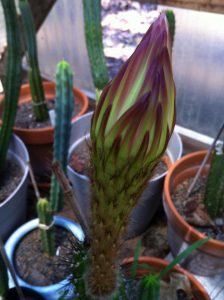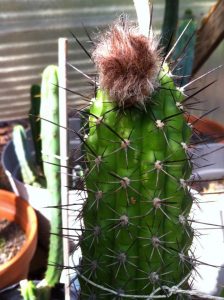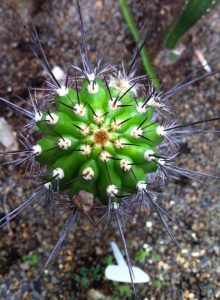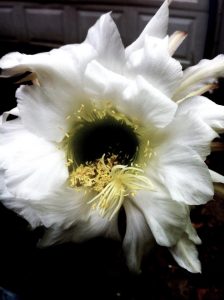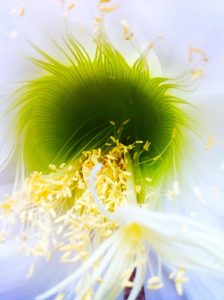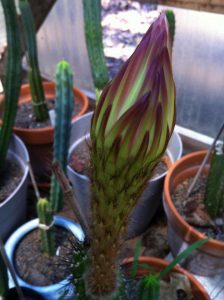Trichocereus glaucus – Echinopsis glauca
It forms shrubs with a size of 1 – 2 meters and often several meters in diameter, sprouting mainly from shoots that lay sideways on the ground. This plant rarely pups from the top or upper parts. The shoots are 5 – 8 inches thick, erect, later lying in the lower parts, the new shoot blue-green, later gray-green.
Ribs: 7-9, very broad, obtuse, 7.5 to 13 mm high, 15-25 mm wide, notched, with transverse furrows that do not reach down to the separating grooves of the ribs,
Areoles: grey felted, 1/2-3/4 inches in diameter, 1to 2 inches free removal, let down by the humps in the notches
Spines: In the new shoot black to brown, becoming gray, straight, rigid
Marginal spines: 7-10, directed laterally, the lower and lateral 8 to 15 mm long, coarse needle-shaped, somewhat flattened, the upper the upper stronger and not sharply separated from the Central spines.
Central spines: 3-6, very spread apart, subulate in the middle, but usually closer to the top edge and almost in the position of an edge of spine, below 1.5 mm thick
Flower: Not far from the apex, 13 to 19 centimeters long, fragrant, opening in the evening, the morning still open,
Ovary: Green with fleshy green, narrowly triangular, 2-5 mm long, pointed scales and large scales raised bases. The flowers are covered with brown/black hairs.
Partition against the nectar chamber 3-4 mm thick, tube-shaped, 13 to 23 mm long, to the stylus 1to 2 mm wide, brownish, almost openly, with nectar
Tubes: In addition funnel shaped, 40-65 mm long, the top 2 to 3 cm wide, pale green interior, exterior gray-green, with triangular points, 7.5 to 10 mm long, dark green scales and tufts of hair as on the ovary.
Stamens: white, greenish below, insertions missing on the top 2 to 3 centimeters of the tube to a ring on the hem, pouch pale brown, approximately at half height petals standing
Stylus: pale green, white or pale brownish above, 10 to 11 cm in length, with 14 to 18 mm fall on the 13-16 spread pale yellow stigma lobes, between the pouches or outstanding.
Deutsche Original Beschreibung:
Büsche von 1 meter bis 2 meter höhe und oft mehreren metern Durchmesser, sprossend hauptsächlich unten von liegenden Trieben, weniger oben sprossend. Triebe 5 bis 8 Zentimeter dick, aufrecht, später in den unteren Teilen liegend, im Neutrieb blaugrün, später mehr graugrün.
Rippen: 7-9, sehr breit, stumpf, 7,5 bis 13 mm hoch, 15 bis 25 mm breit, gekerbt, mit Querfurchen, die nicht bis zu den Trennfurchen der Rippen hinabreichen,
Areolen: Graufilzig, 1/2-3/4 Zentimeter Durchmesser, 1bis 2 Zentimeter freie Entfernung, , von den Höckern in die Kerben hinabreichend
Stacheln: Im Neutrieb schwarz bis braun, , vergrauend, gerade, starr
Randstacheln: 7 bis 10, seitlich gerichtet, die unteren und seitlichen 8 bis 15 mm lang, derb nadelförmig, etwas abgeflacht, die oberen die Oberen stärker und nicht scharf von den Mittelstacheln gesondert.
Mittelstacheln: 3 bis 6, sehr gespreizt, pfriemlich in der Mitte, aber meist näher dem oberen Rand und fast in der Stellung eines Randstachels, unten 1,5 mm dick
Blüte: Nicht weit weg vom Scheitel, 13 bis 19 zentimeter lang, duftend, abends öffnend, morgens noch offen,
Fruchtknoten: Grün mit fleischigen grünen, schmal dreieckigen, 2-5 mm langen spitzen Schuppen und großen erhabenen Schuppenbasen. Mit starken schwarzen oder braunschwarzen Wollhaaren.
Trennwand gegen die Nektarkammer 3-4 mm dick, diese tubisch, 13 bis 23 mm lang,um den Griffel 1bis 2 mm weit, bräunlich, fast offen, mit Nektar
Röhren: Darüber trichterig, 40 bis 65 mm lang, oben 2 bis 3 cm weit, innen blaß grünlich , außen graugrün, mit dreieckigen Spitzen, 7,5 bis 10 mm langen dunkelgrünen Schuppen und Haarbüscheln wie auf dem Fruchtknoten.
Staubfäden: weiß, unten grünlich, Insertionen fehlen auf den obersten 2 bis 3 Zentimetern der Röhre, bis auf einen Ring auf dem Saum, Beutel blassbraun, etwa bei halber Petalen Höhe stehend
Griffel: blassgrün, oben weiß oder blass bräunlich, 10 bis 11 cm lang, wovon 14 bis 18 mm auf die 13-16 gespreizten blaßgelben Narbenäste fallen, zwischen den Beuteln oder sie überragend.
Very interesting Plant and very similar to what some would label Trichocereus Macrogonus.
Trichocereus glaucus - Echinopsis glauca

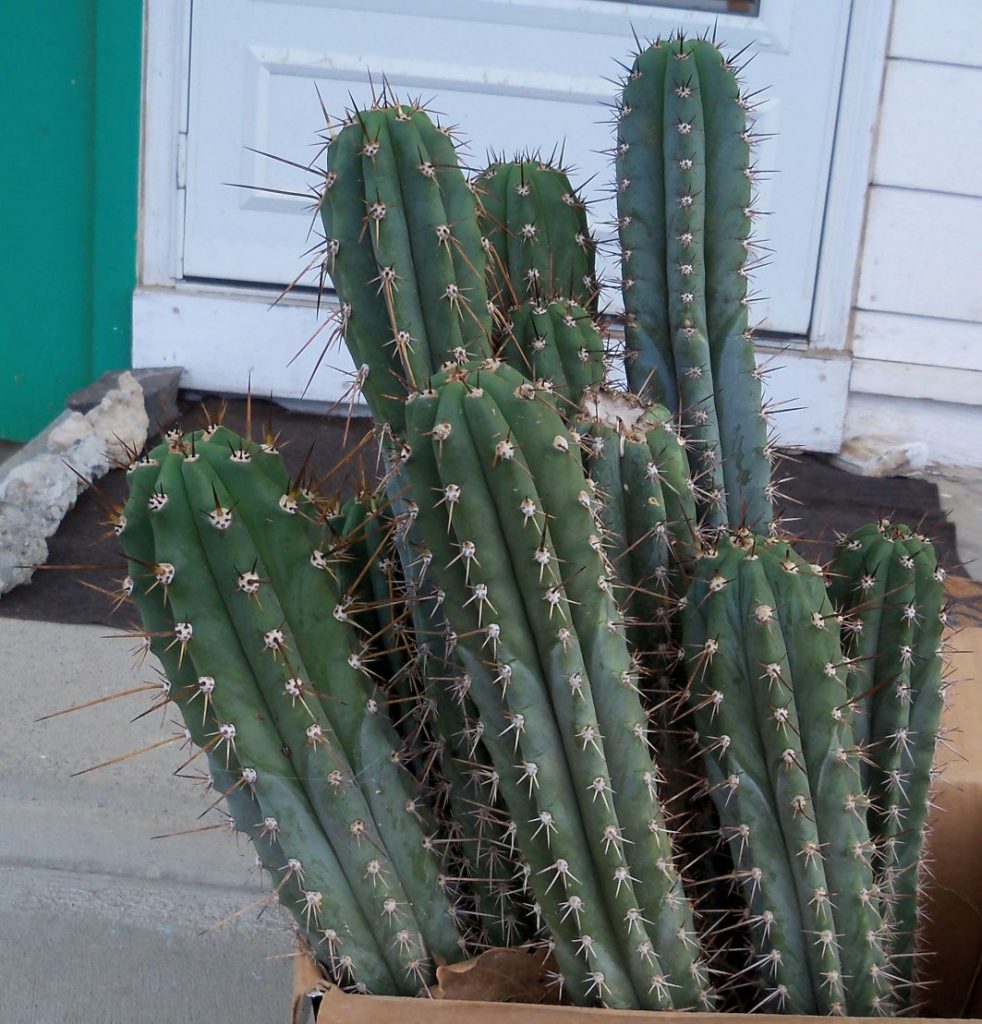

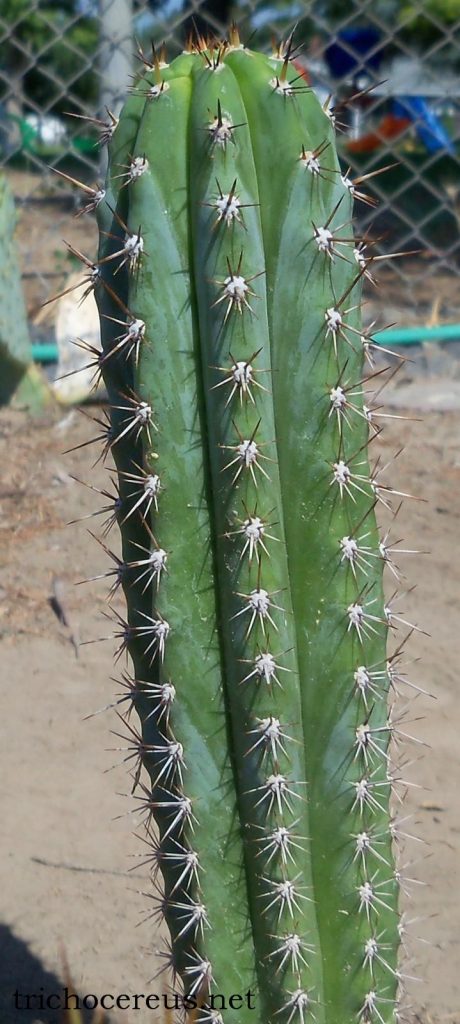
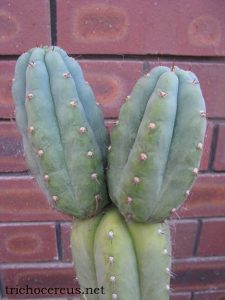
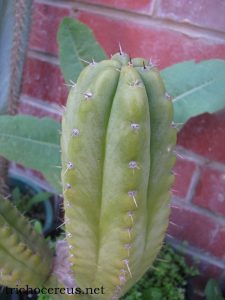

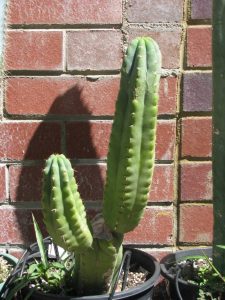
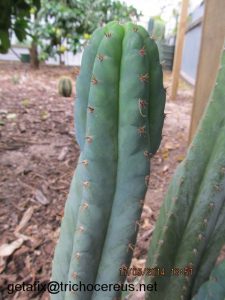
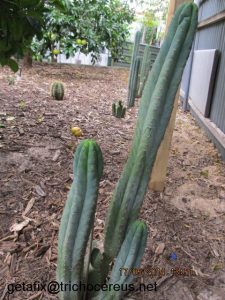


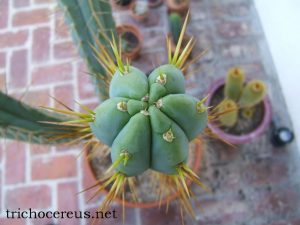
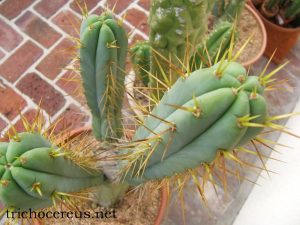
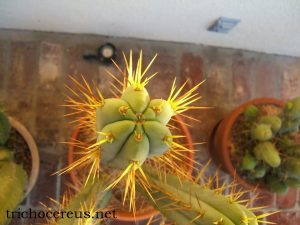

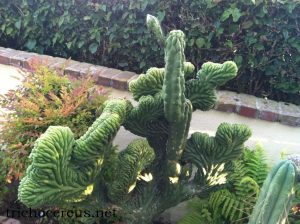
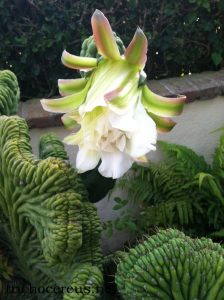
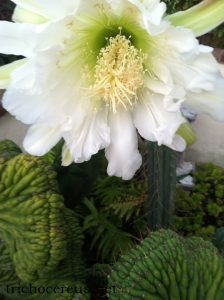

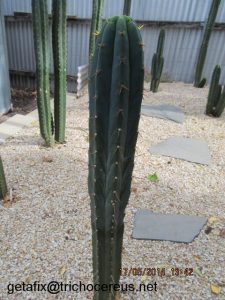
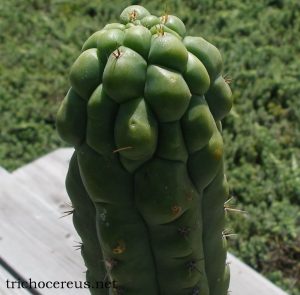

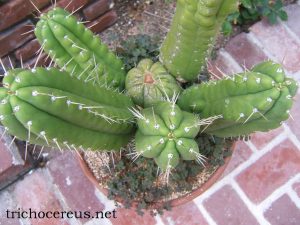
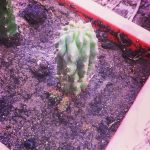
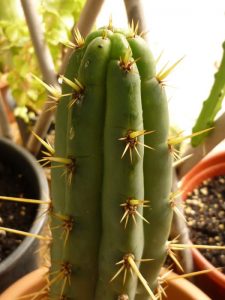
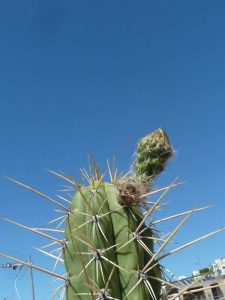
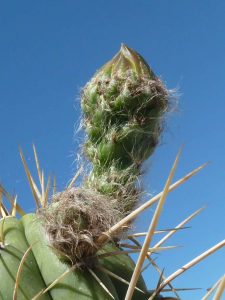
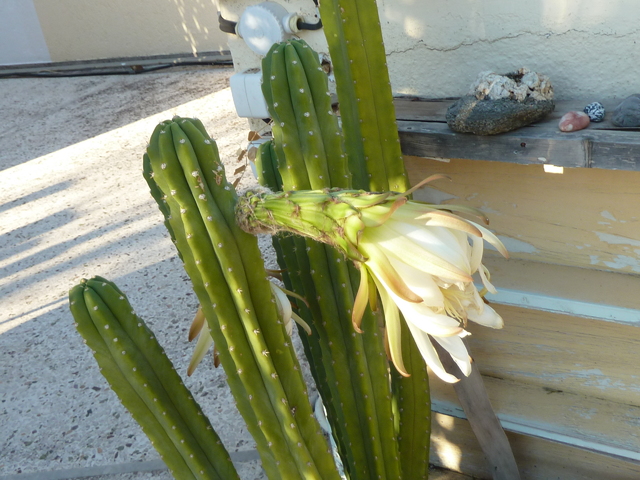
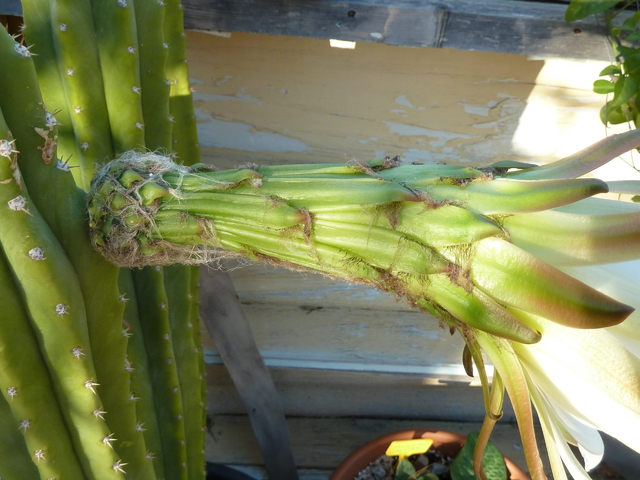
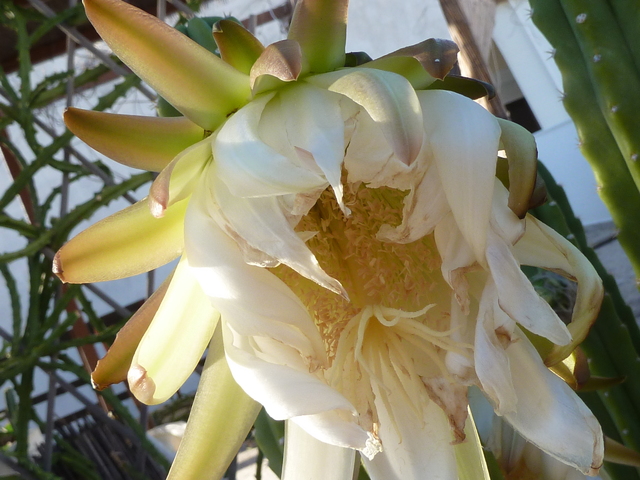










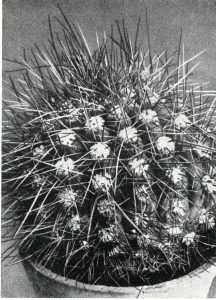
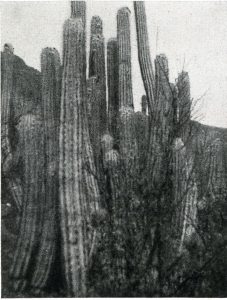
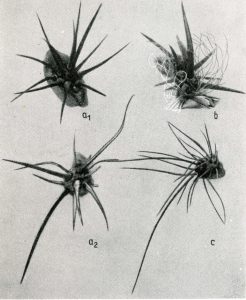

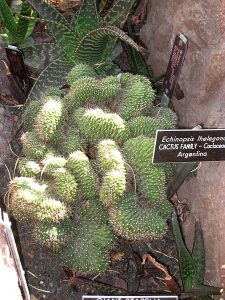 Echinopsis Thelegona Cristata by Daderot
Echinopsis Thelegona Cristata by Daderot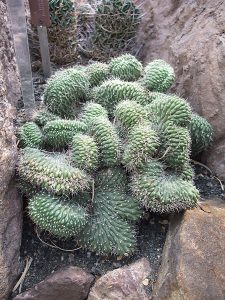
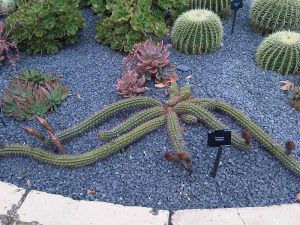 by Emoke denes Echinopsis_thelegona
by Emoke denes Echinopsis_thelegona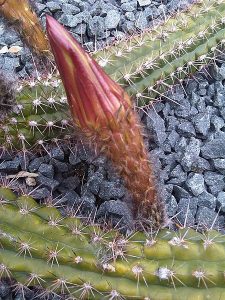

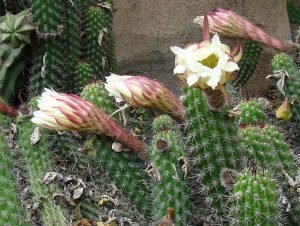 by Dick Cullbert
by Dick Cullbert